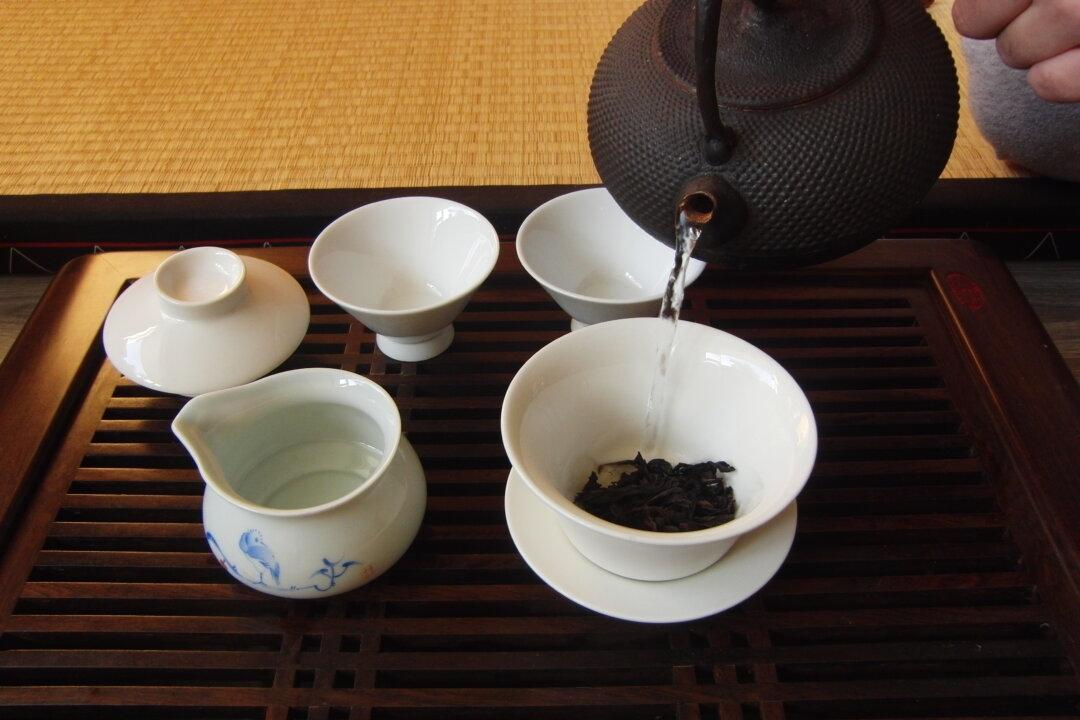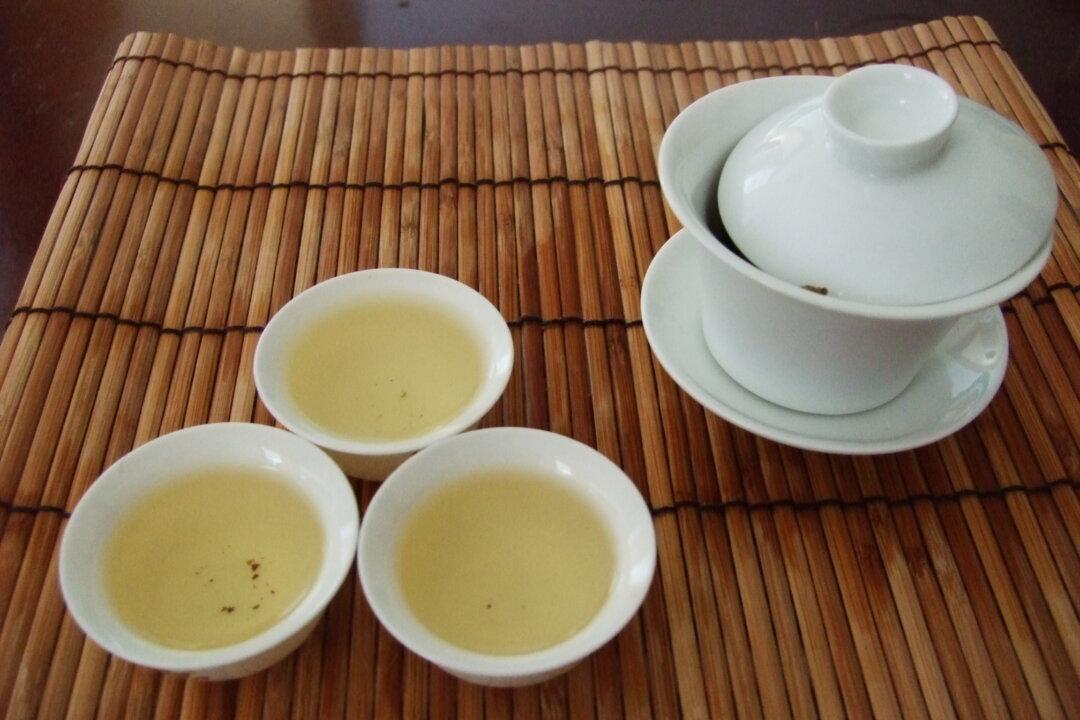The “gaiwan,” which literally means lidded (gai) bowl (wan), is a handy and elegant tool to brew any type of loose tea. You can often see the gaiwan in portraits of historical figures or in movies about ancient China.
The invention of the gaiwan in the Ming dynasty (1644-1911) coincides with the drinking of loose tea leaves, rather than powdered tea. In the 1970s, customers in Hong Kong restaurants were served tea in these cups, rather than the big communal tea pots nowadays, so that every person could determine/adjust the strength of the infusion, by varying the brewing time, by him or herself. In those days, the quality of tea still mattered.
The gaiwan consist out of three parts: a lid, the bowl, and the saucer. Some say these respectively signify: heaven, man, and earth. This practical tea cup can be picked up from Chinatown for a couple of dollars or bought as an antique for several thousand dollars.
There are several ways to brew loose tea leaves in a gaiwan, depending on the type of tea. We will discuss two ways of tea brewing: the first way is suitable for lightly oxidized tea, such as green, yellow, and white tea. The other way is suitable for more oxidized teas such as oolong, black (or red), or Pu-erh tea.
The main reason why these tea types need a different way of brewing is because lightly oxidized teas have a lighter taste and can brew much longer than highly oxidized teas that have a lot of strength and can easily be overbrewed and as a result become bitter.
So one can directly drink these lightly oxidized tea from the cup (gaiwan), with the lid serving as a filter to prevent loose leaves entering one’s mouth while sipping. Heavier oxidized teas require the infusion to be poured into another vessel.
The gaiwan’s glazed surface, typically made of porcelain or glass, ensures that the taste is not absorbed by the vessel and that no taste or fragrance is added to the infusion. That is also why the gaiwan is favored by tea connoisseurs in tea testing, as it produces a neutral brew.
Method 1 “Directly drink from the gaiwan,” for lightly oxidized teas such as green, yellow, and white.
(1) Pre-heat (and clean) the cup with hot water.
(2) Add loose tea leaves (around 5 grams) to the cup.
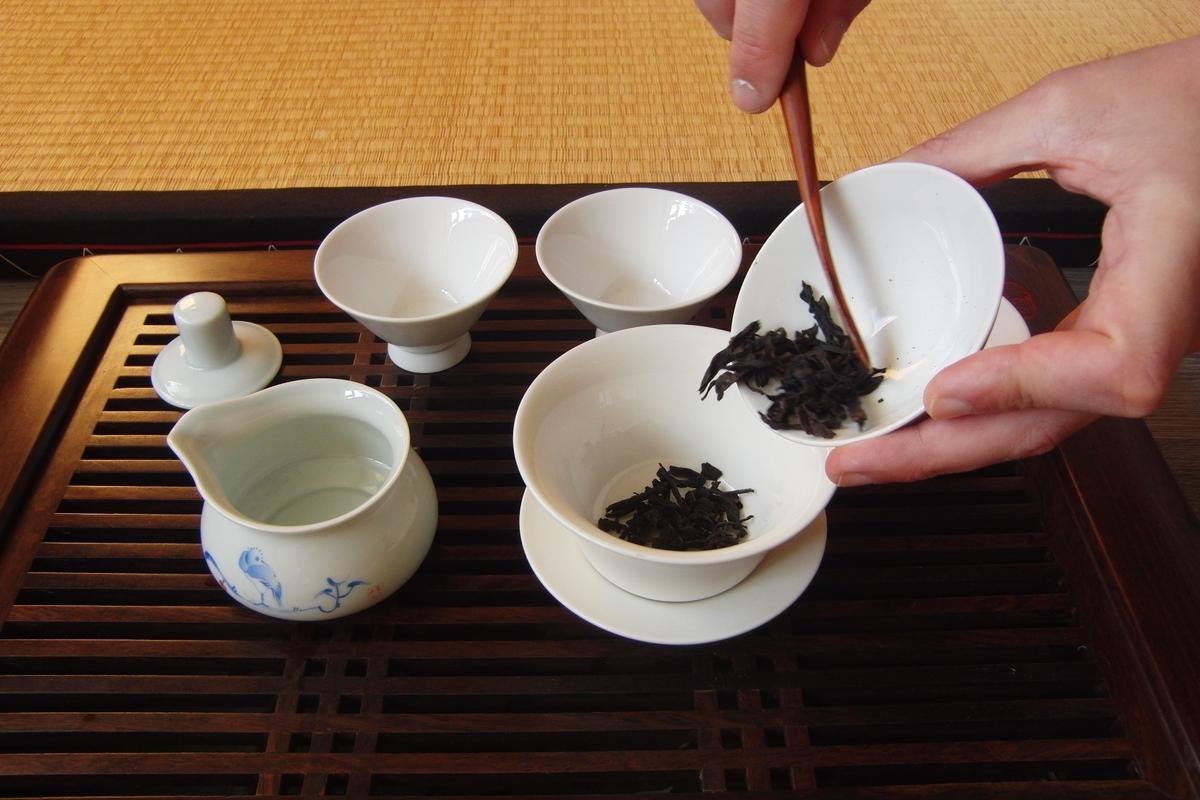
(3) Gently pour water at a temperature of around 80 degrees onto the insides of the cup, around the tea leaves. If water is too hot and/or poured directly on the lightly oxidized tea leaves, it burns the leaves and it will produce a bitter and burned taste. Fill two-thirds of the cup with water.
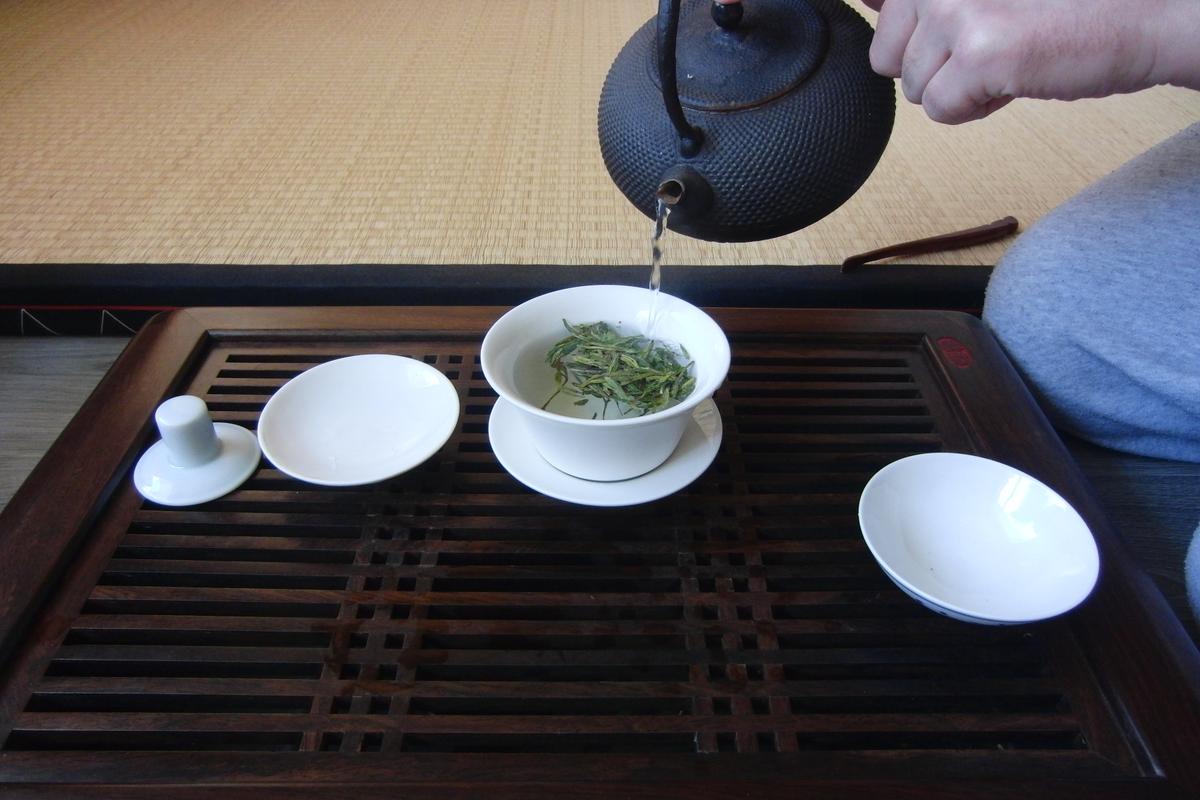
(4) Put the lid on the cup and let it steep for about 30 seconds, the tea is ready.
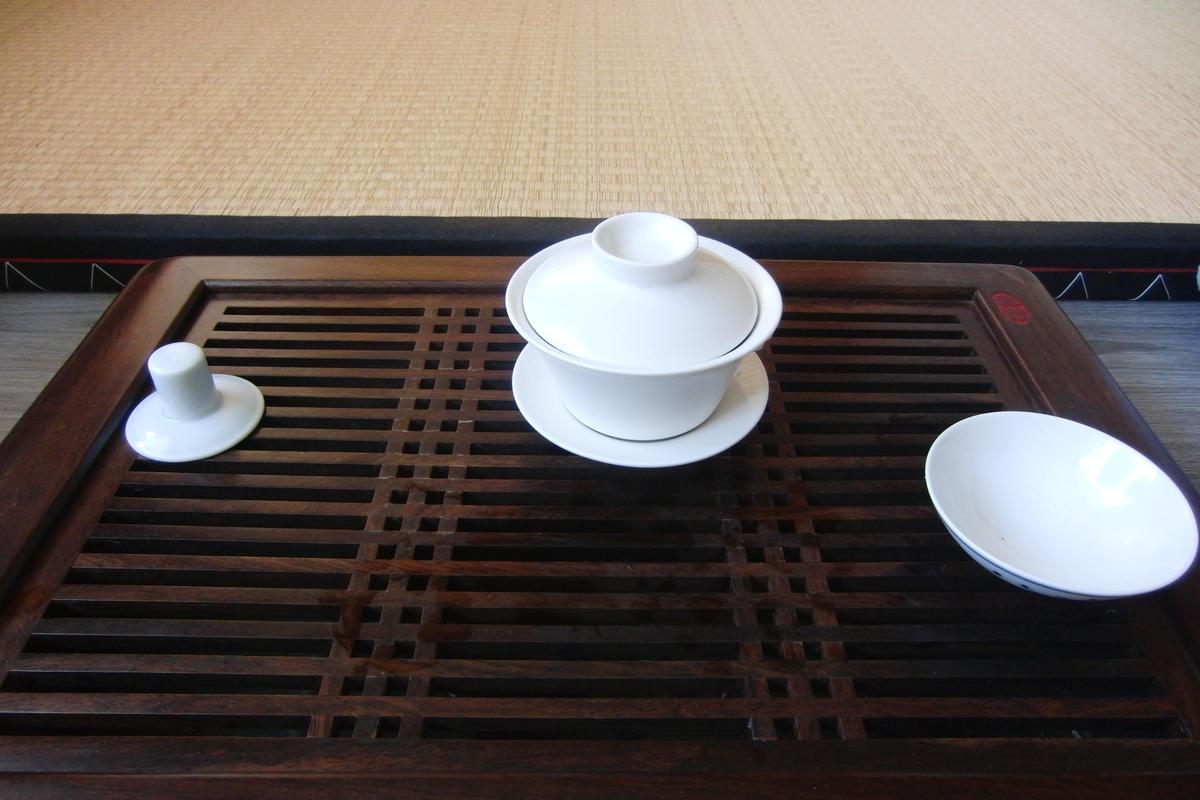
(5) Some tea leaves do not sink to the bottom. In that case, use the lid to make an opening through which you can sip the infusion. The lid serves as a filter for the leaves.
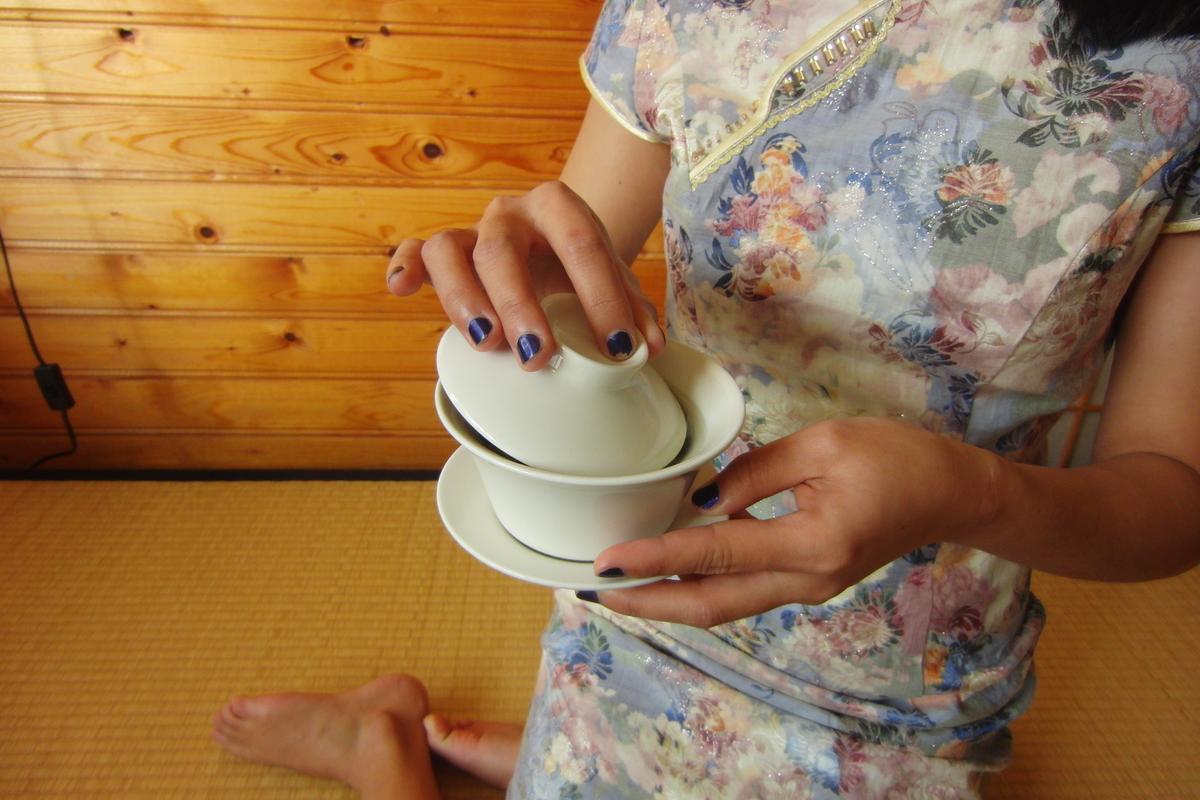
(6) Most tea can be brewed multiple times (green tea 1 to 3 times). Leave a little bottom of tea infusion in the cup, which serves as a root for the next infusion.
(7) For the next infusion: repeat step 3 and 4, but this time the water temperature can be higher and the brewing time longer.
Method 2 “Use Gaiwan as Teapot,” for highly oxidized teas such as oolong, black (or red), or Pu-erh. One needs an additional vessel to pour the infusion into. (photo 6362, starting line-up)
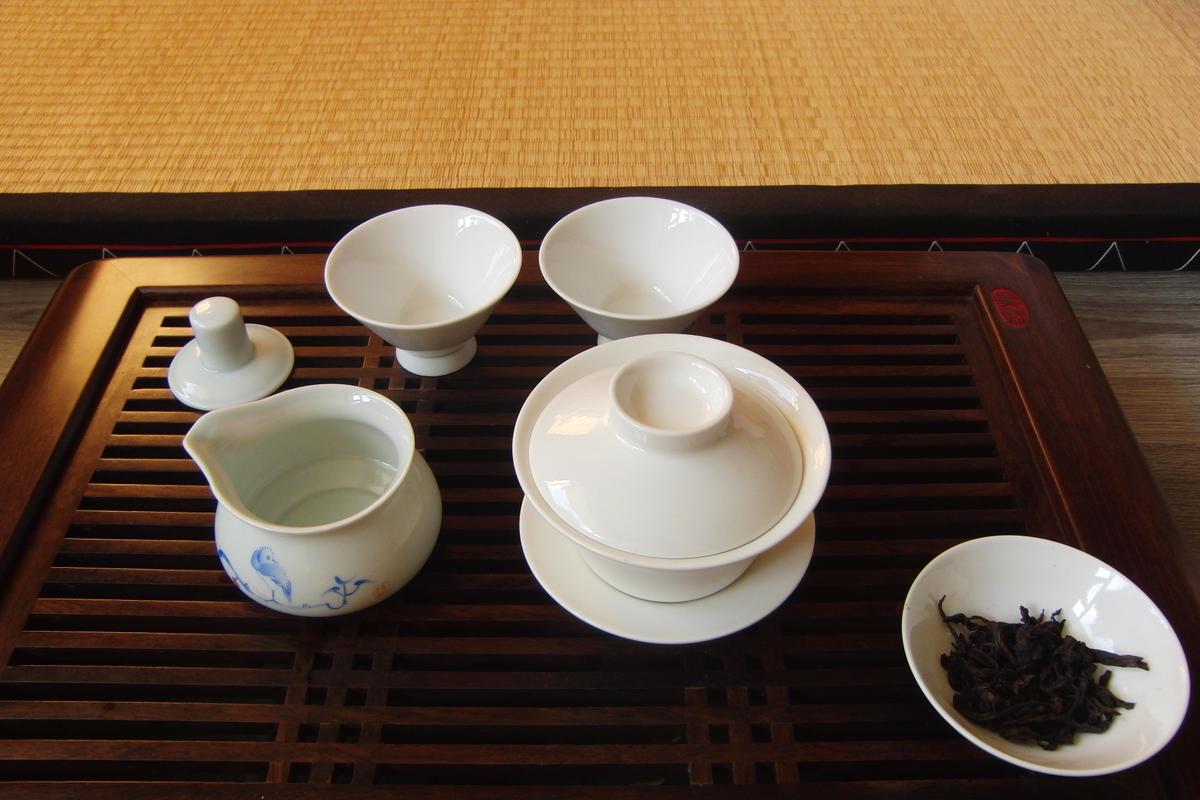
(1) Pre-heat (and clean) the cup with hot water.
(2) Add loose tea leaves (around 5 gram) to the cup.

(3) Gently pour a small amount of hot water (around 90 to 100 degrees) onto the insides of the cup.
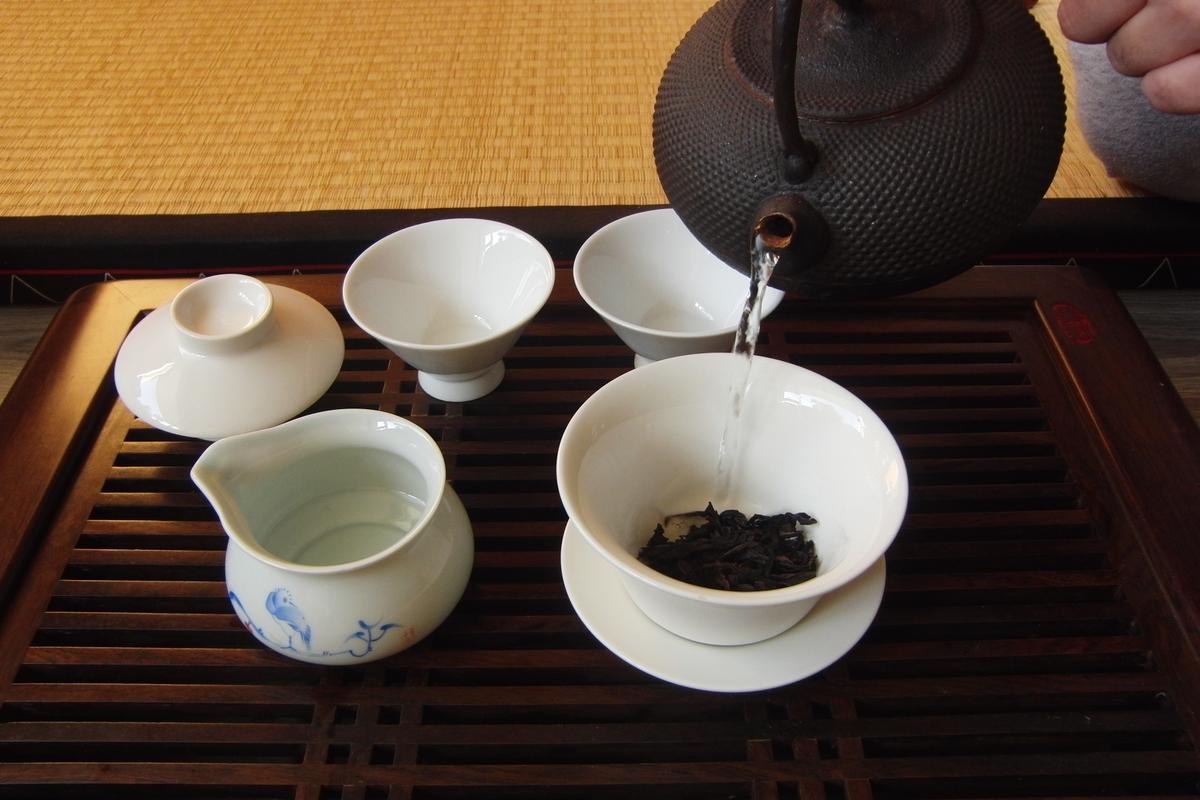
(4) Let is steep for 10 seconds before disposing the infusion into another cup or directly into the sink or tea table. This is called “waking up the tea” and serves to let the taste come out (from the inside) and to rinse (or wash) the tea leaves of any dust.
(5) Once again, gently pour hot water onto the insides of the cup, around the tea leaves, and fill up the cup to about two-thirds.
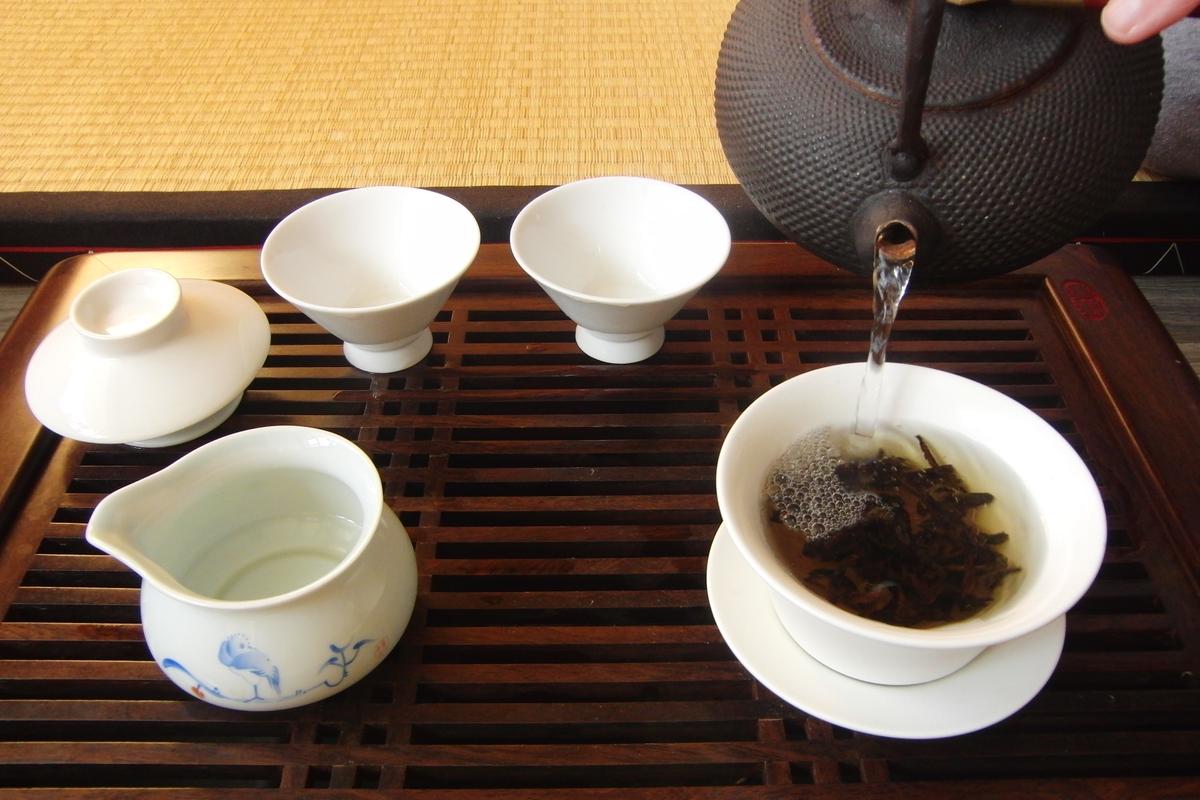
(6) Add the lid and let it steep for 10-30 seconds.
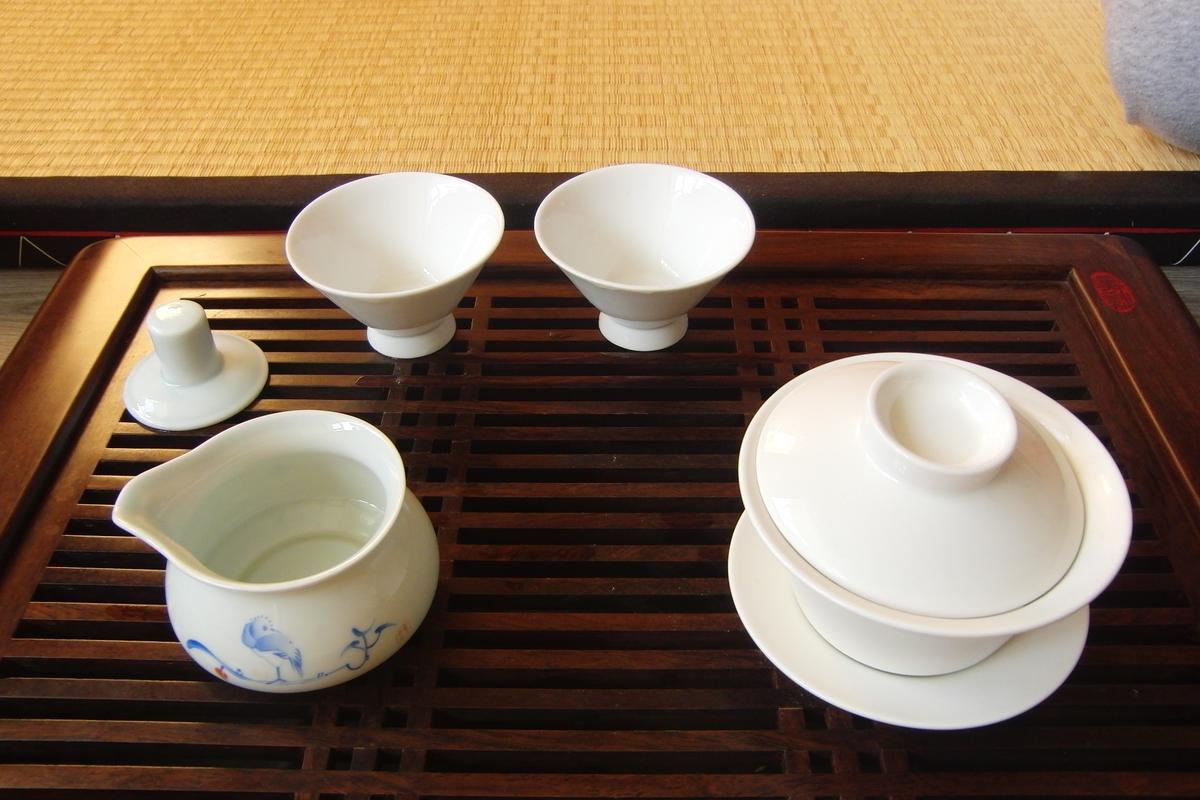
(7) Take off the lid and smell the fragrance. The fragrance tells a lot about the quality of tea.
(8) Put the lid on the cup and leave a small opening through which you can pour the infusion without the leaves into another cup. Keep your hands high on the cup so you do not burn your fingers.
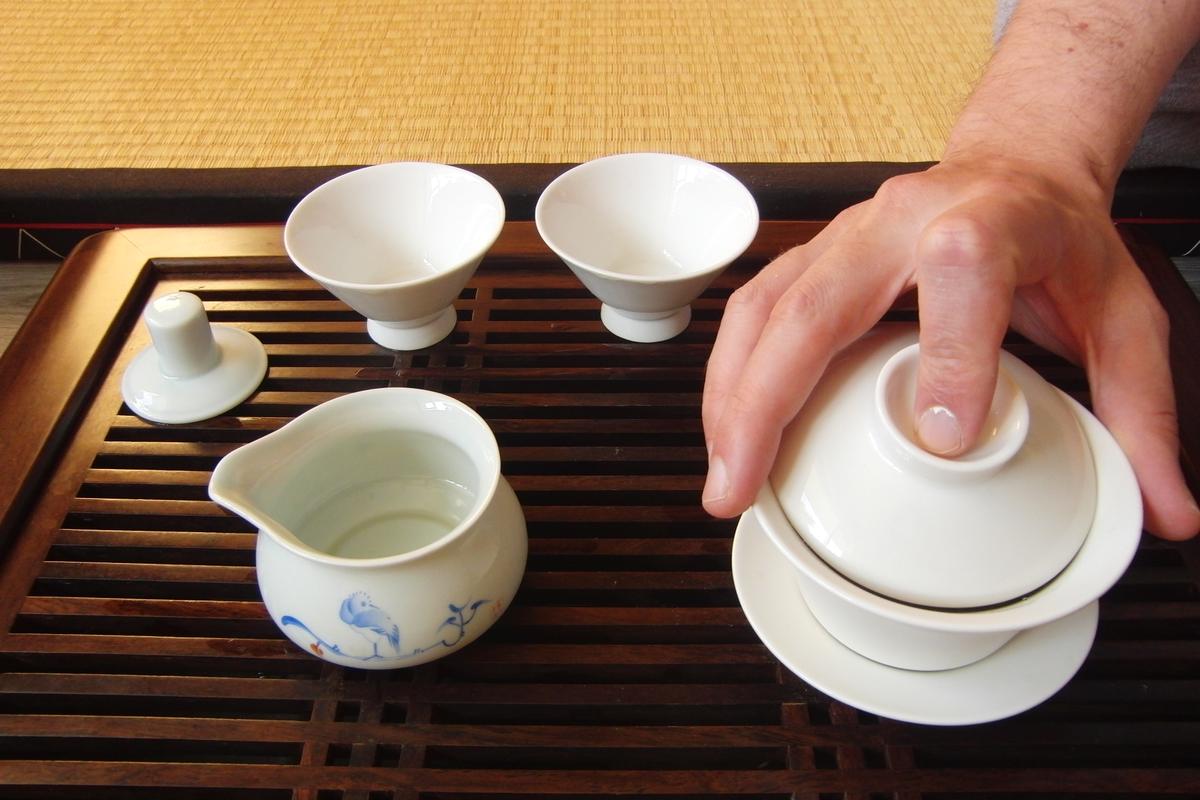
(9) Pour!
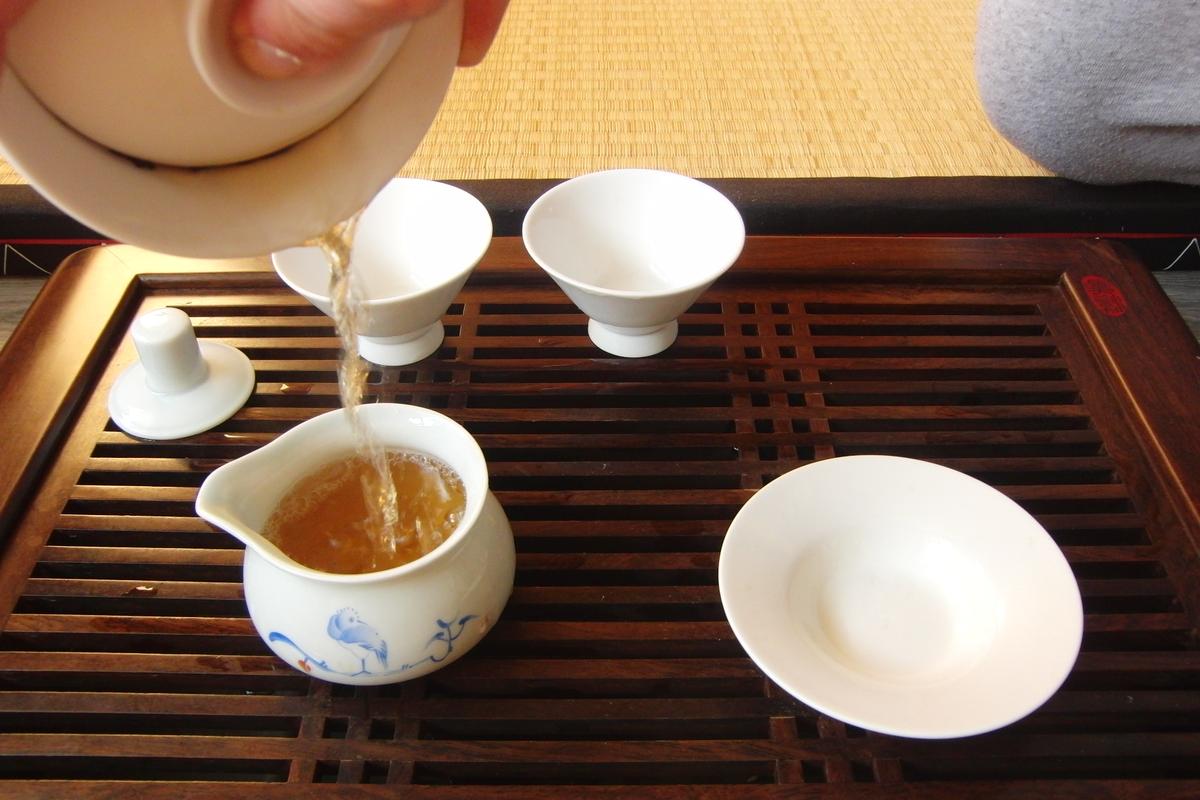
(10) Drink.

(11) For multiple infusions: repeat steps 5 to 10, but extend the brewing time by 10 seconds each time. Oxidized tea, such as oolong and black, can be infused up to 8 times.
